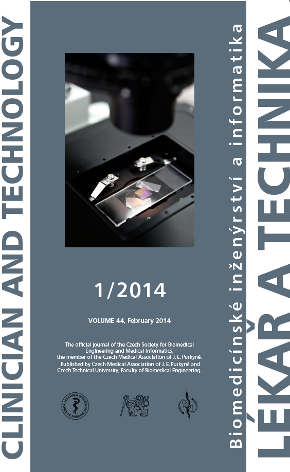THE EFFECT OF ACETYLSALICYLIC ACID ON ANGIOGENESIS IN VITRO
Keywords:
angiogenesis, acetylsalicylic acid, hASC HUVEC co-cultureAbstract
Angiogenesis, the formation of new blood vessels, is an essential aspect of, among others, embryonic development, wound healing and the female reproductive cycle. It is also necessary for the expansion of tumour masses beyond a minute volume. Acetylsalicylic acid (ASA) is a non-steroidal anti-inflammatory drug with additional antitumour activity. We tested ASA for its ability to inhibit angiogenesis in a simplified angiogenesis model, hASC+HUVEC co cultured in vitro, using immunocytochemical staining with fluorescence-marked antibodies and observation of tubulelike structures and their branching under a fluorescence microscope. We confirmed that ASA is an efficient and useful angiogenesis inhibitor and deserves further attention. We intend using the designed angiogenesis model and the methods described for observing changes in angiogenesis after anti tumour photodynamic therapy (PDT), and also for enhancing PDT efficiency by addition of angiogenesis inhibitors.Downloads
Published
Issue
Section
License
Copyright (c) 2017 Klara Pizova, Adela Hanakova, Outi Huttala, Jertta-Riina Sarkanen, Tuula Heinonen, Dagmar Jírová, Kristina Kejlova, Hana Kolarova

This work is licensed under a Creative Commons Attribution 4.0 International License.
Authors who publish with this journal agree to the following terms:
- Authors retain copyright and grant the journal right of the first publication with the work simultaneously licensed under a Creative Commons Attribution License (https://creativecommons.org/licenses/by/4.0/) that allows others to share the work with an acknowledgment of the work's authorship and initial publication in CTJ.
- Authors are able to enter into separate, additional contractual arrangements for the non-exclusive distribution of the journal’s published version of the work (e.g., post it to an institutional repository or publish it in a book), with an acknowledgment of its initial publication in this journal.
- Authors are permitted and encouraged to post their work online (e.g., in institutional repositories or on their website or ResearchGate) prior to and during the submission process, as it can lead to productive exchanges.
CTJ requires that all of the content of the manuscript has been created by its respective authors or that permission to use a copyrighted material has been obtained by the authors before submitting the manuscript to CTJ. CTJ requires that authors have not used any copyrighted material illegally, as for example a picture from another journal or book, a photo, etc. It is the author’s responsibility to use only materials not violating the copyright law. When in doubt, CTJ may ask the authors to supply the pertinent permission or agreement about the use of a copyrighted material.
The opinions expressed in CTJ articles are those of authors and do not necessarily reflect the views of the publishers or the Czech Society for Biomedical Engineering and Medical Informatics.


